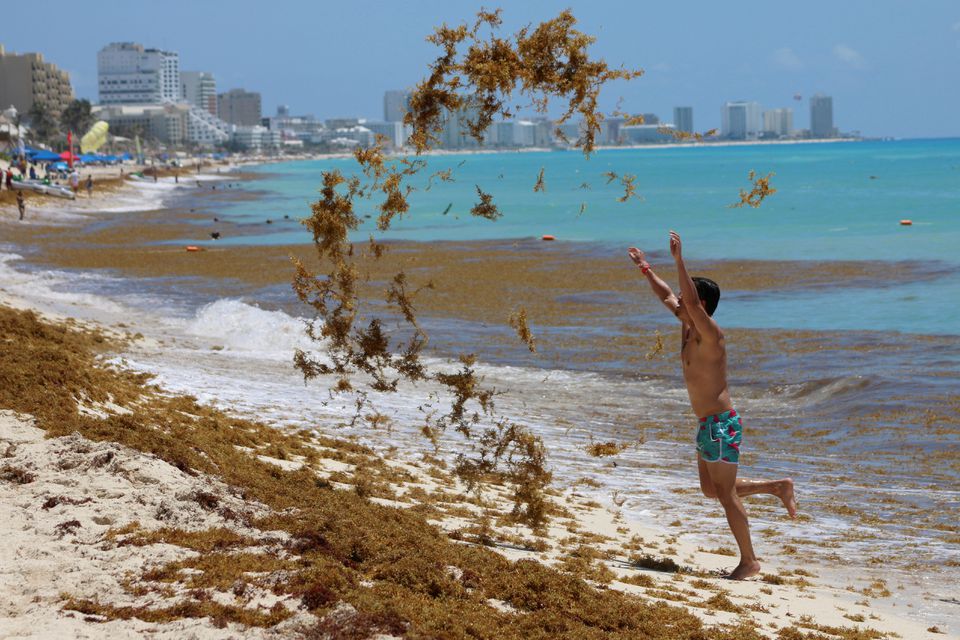As the sun rises in Mexico’s Quintana Roo state, home to the white sandy beaches of Cancun and Tulum, Rear Admiral Alejandro Lopez Zenteno readies his sailors for another day of dragging rafts of brown seaweed to shore and out of view of cocktail-sipping tourists.
Zenteno heads the operation for the Mexican Navy, which coordinates with the state and local governments to protect an area visitor trade that was valued at more than $15 billion annually before the coronavirus pandemic hit, according to Quintana Roo’s tourism secretariat.
When it washes ashore, the plant – known as sargassum – turns black and emits a sewage-like stench so powerful it has been known to make travelers ill. It attracts insects and turns the area’s famed turquoise snorkeling waters a sickly brown.
And it just keeps coming. Since 2011, seaweed here and across the Caribbean has exploded for reasons scientists suspect is related to climate change but don’t yet fully understand.
In Quintana Roo alone, Mexico’s Navy since March has removed more than 37,000 tons of sargassum — more than the weight of three Eiffel Towers — from beaches and surrounding waters.
“We don’t expect this to end anytime soon,” Zenteno said onboard a seaweed-clearing ship known as a “sargacero,” one of 12 deployed by the Navy.
Entrepreneurs across the region, meanwhile, are searching for ways to monetize the muck. They’re experimenting with seaweed-based products including animal feed, fuel, construction material – even signature cocktails.
“Sargassum is seen as a nuisance,” said Srinivasa Popuri, an environmental scientist in Barbados with the University of the West Indies. He views the Caribbean as “blessed” with a resource that grows naturally and requires no land or other inputs to flourish.
Popuri is working on extracting substances from seaweed that could have applications for the pharmaceutical, medical and food industries.
Whether such efforts prove viable remains to be seen. Commercializing seaweed can be challenging given the expense of collecting it.
Still, creativity is blossoming along with the seaweed.
SARGASSUM SOLUTIONS
One of the biggest potential uses lies in demand for so-called alginates, a biomaterial extracted from brown seaweed, which is a common ingredient in food thickeners, wound care and waterproofing agents for its gel-like properties.
The global market in 2020 was worth almost $610 million, a figure that’s expected to grow to $755 million by 2027, according to consulting firm Global Market Insights.
Omar Vazquez, meanwhile, is building houses.
Vazquez, a nursery owner in the seaside town of Puerto Morelos near Cancun, for several years had used sargassum as a fertilizer. In 2018, he came up with the idea of turning it into a construction material. He said the resulting sargassum “bricks,” baked in the sun, allow him to build a house 60% cheaper than if he were to use traditional cement blocks.



